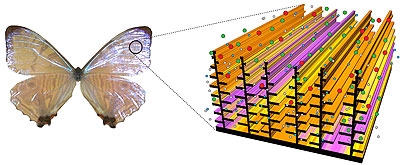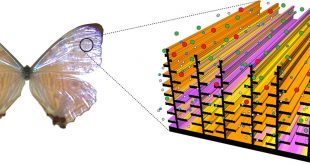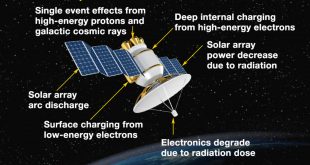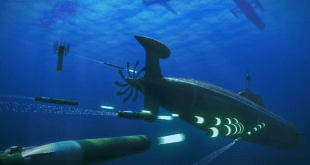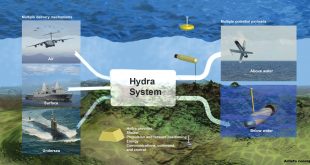Researchers have looked into nature for inspiration, understanding the mechanisms animals, insects and plants use to capture and process light and then designing next generation optoelectronics devices and systems like light-emitting diodes (LEDs), sensors and materials. Biomimicry has led to the development of several naturally inspired structures, such as curved …
Read More »Yearly Archives: 2020
DARPA’s thrust on Bio-Inspired Photonics
Nature provides many examples of optical structures whose properties arise from an intricate morphology. The brilliant colors seen in butterfly wings, beetle carapaces, and peacock feathers, for example, are due in large part to their complex structure, says DARPA. These hierarchical structures, scaling from micron to nanometer level, achieve remarkable …
Read More »Next generation precision strike missiles carry Intelligent Missile IIR Seekers for High hit probability against stationary and moving targets
In recent years, precision guided weapons play more and more important role in modern war. One of the greatest strengths of a precision strike missile is a reduction in the number of weapons or aircraft sorties required to destroy a target. Strategy Analytics forecasts the global Smart Weapons (SW) market …
Read More »One of biggest threat to aerospace and defense electronics for deep space missions is radiation
One of the biggest threats to the deployed aerospace and defense electronics systems is radiation. Outside the protective cover of the Earth’s atmosphere, the solar system is filled with radiation. The natural space environment consists of electrons and protons trapped by Earth’s magnetic field, protons and small amount of heavy nuclei …
Read More »Countries demand new security features in Bank notes to stay ahead of currency counterfeiters
Counterfeit money is imitation currency produced without the legal sanction of the state or government usually in a deliberate attempt to imitate that currency and so as to deceive its recipient. Producing or using counterfeit money is a form of fraud or forgery. Counterfeit currency has been in circulation …
Read More »Synthetic biology roadmap to set research agenda for next 10 years, published by EBRS
Synthetic biology is the application of science, technology and engineering to facilitate and accelerate the design, manufacture and/or modification of genetic materials in living organisms, as defined by the European Commission. It envisions the redesign of natural biological systems for greater efficiency, as well as create new organisms as well as …
Read More »Blockchain technology of decentralized digital currency to enhance security of additive manufacturing in Internet of Things to Military 3D printing
Blockchain is based on open, global infrastructure, decentralized public ledger of transactions that no one person or company owns or controls, ensures security of transfer of funds through public and private cryptology and third parties to verify that they shook, digitally, on an agreement. A blockchain is, in the simplest …
Read More »DARPA’s Blue Wolf developed fast, efficient underwater vehicles (UUVs) with energy, hydrodynamic lift, and drag-reduction technology breakthroughs
Unmanned underwater vehicles (UUVs) have inherent operational and tactical advantages such as stealth and surprise. UUV size, weight and volume are constrained by the handling, launch and recovery systems on their host platforms. Mission performance typically sets the range, endurance, speed, and depth requirements, however the UUV range is limited …
Read More »DARPA Hydra developed a distributed undersea network of UUVs and UAVs able to operate independently for weeks or months
Today’s naval forces rely primarily on highly capable multifunctional manned platforms, such as ships and submarines. Even the most advanced vessel, however, can only be in one place at a time, making the ability to respond increasingly dependent on being ready at the right place at the right time. With …
Read More »Muography employs cosmic ray particles Muons, to detect shielded nuclear contraband, to objects deeply buried up to thousands of meters below the earth’s surface
Muons are subatomic particles that behave a lot like electrons but are around 200 times heavier. As the US Department of Energy explains, “Muons created in the atmosphere constantly hit every inch of the Earth’s surface and pass through almost any substance.” Many scientists have noted that measuring the …
Read More » International Defense Security & Technology Your trusted Source for News, Research and Analysis
International Defense Security & Technology Your trusted Source for News, Research and Analysis
